The Kawasaki Ninja 400 is a sporty and approachable motorcycle that offers easy control and fun performance. One of the key factors that riders consider when purchasing a motorcycle is its fuel efficiency.
The Ninja 400 is known for its impressive fuel economy, making it a popular choice for riders who want to save money on gas while enjoying the thrill of riding a sportbike.
When it comes to the Ninja 400’s fuel economy, the most important metric is miles per gallon (MPG). MPG is a measure of how many miles a motorcycle can travel on a single gallon of gas. The higher the MPG, the more fuel-efficient the motorcycle is.
The Ninja 400 has a claimed fuel economy of 43.6 MPG, which is quite impressive for a sportbike. This means that riders can travel long distances without needing to stop for gas as often, making it a great choice for touring or commuting.
Overall, the Ninja 400’s impressive fuel efficiency is just one of the many reasons why it is a popular choice among riders.
Whether you’re looking for a motorcycle for commuting, touring, or just having fun on the weekends, the Ninja 400 is a great option that offers a balance of performance, comfort, and fuel efficiency.
Ninja 400 Overview
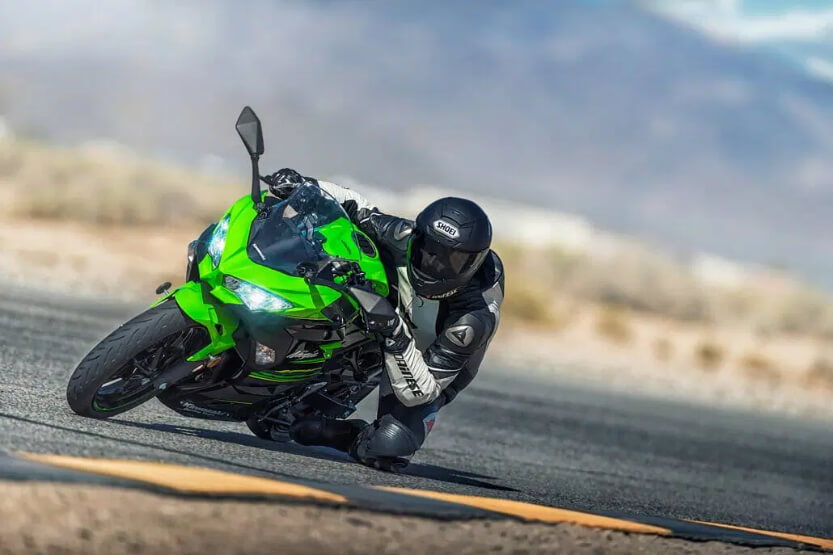
The Kawasaki Ninja 400 is a popular motorcycle known for its balance of power, maneuverability, and affordability. It was first introduced in 2018 and has since undergone several updates to improve its performance and features.
One of the most notable features of the Ninja 400 is its fuel efficiency. With a 3.7-gallon fuel tank and a fuel-injected 399cc parallel-twin engine, the Ninja 400 is capable of achieving impressive gas mileage.
According to Fuelson, the Ninja 400 can achieve up to 55 miles per gallon, making it an ideal choice for long-distance rides and commutes.
In addition to its fuel efficiency, the Ninja 400 is also available in both ABS and non-ABS versions. The ABS version comes equipped with Kawasaki’s advanced anti-lock braking system, which helps prevent wheel lock-up and skidding during sudden stops or emergency maneuvers.
The Ninja 400 ABS has an MSRP of $5,799, while the non-ABS version is priced at $5,399, according to Kawasaki.
The Ninja 400 has a seat height of 30.9 inches, making it a comfortable ride for riders of all sizes. It also features a lightweight trellis frame and a compact twin-cylinder engine, which together provide a smooth and agile riding experience.
Overall, the Kawasaki Ninja 400 is a versatile motorcycle that offers a combination of performance, fuel efficiency, and affordability. With its sleek design and advanced features, it is a popular choice among both new and experienced riders.
Performance and Efficiency
Engine and Power
The Kawasaki Ninja 400 is equipped with a liquid-cooled, 4-stroke, parallel-twin engine with a displacement of 399cc. The engine is capable of producing a maximum power output of 49 horsepower at 10,000 RPM and a peak torque of 28 lb-ft at 8,000 RPM.
The engine is paired with a 6-speed manual transmission and features electronic fuel injection (EFI) for improved fuel efficiency and performance.
Fuel Economy and MPG
The Ninja 400 boasts an impressive fuel economy, with an average of 49.44 MPG according to Fuelson. The fuel efficiency of the Ninja 400 can be attributed to various factors, including the aerodynamic shape of its 4.5-gallon fuel tank and the use of EFI.
The Ninja 400’s fuel economy is comparable to other motorcycles in its class, such as the Yamaha YZF-R3 and the Honda CBR500R.
In addition to its impressive fuel economy, the Ninja 400 also features a high compression ratio of 11.5:1, which helps to improve its overall performance. The Ninja 400’s DOHC engine design allows for precise valve timing, which further enhances its power and efficiency.
Overall, the Ninja 400 is a well-rounded motorcycle that offers both impressive performance and fuel efficiency.
Its parallel-twin engine design, EFI, and aerodynamic fuel tank all contribute to its impressive fuel economy, while its high compression ratio and DOHC engine design provide it with excellent power and torque.
Ride and Handling
The Ninja 400 is known for its excellent ride and handling. It comes with a lightweight trellis frame that is designed to provide superior rigidity and balance. The bike’s chassis is well-balanced, which makes it easy to control and maneuver.
Chassis and Suspension
The Ninja 400’s chassis is designed to provide excellent stability and handling. It has a wheelbase of 53.9 inches, a rake of 24.7 degrees, and a trail of 3.6 inches.
The front suspension features 41mm telescopic forks, while the rear suspension is a Bottom-Link Uni-Trak, gas-charged shock with adjustable preload. The suspension system is designed to provide a comfortable ride while also offering good handling and stability.
Braking System
The Ninja 400 comes with a petal disc brake system that features a 310mm front disc with a 2-piston caliper and a 220mm rear disc with a 2-piston caliper.
The braking system is designed to provide excellent stopping power and control. The front brake lever is adjustable, which allows the rider to customize the brake feel to their liking.
Ergonomics and Comfort
The Ninja 400’s ergonomics are designed to provide a comfortable riding position for riders of all sizes.
The bike’s seat height is 30.9 inches, which makes it easy for shorter riders to reach the ground. The bike’s handlebars are positioned in a way that allows the rider to sit upright, which reduces fatigue on longer rides.
In summary, the Ninja 400 provides an excellent ride and handling experience. Its lightweight trellis frame, well-balanced chassis, and suspension system provide superior stability, handling, and comfort.
The bike’s braking system is also designed to provide excellent stopping power and control. Overall, the Ninja 400 is a well-rounded bike that is suitable for riders of all skill levels.
Design and Features

The Kawasaki Ninja 400 is a sporty motorcycle that boasts an aggressive and aerodynamic design. It is available in four different color options, including Metallic Carbon Gray, Metallic Matte Twilight Blue, Pearl Blizzard White, and Metallic Magnetic Dark Gray.
Each color option has its unique appeal, and riders can choose the one that best suits their style.
Styling and Color Options
The Ninja 400’s styling is inspired by its larger sibling, the Ninja ZX-10R. It features sharp lines, a sculpted fuel tank, and a sleek tail section. The front fairing houses twin LED headlights that give the bike a distinctive look. The bike’s trellis frame is visible, adding to its sporty appearance.
The Metallic Carbon Gray color option gives the Ninja 400 a stealthy and understated look. The Metallic Matte Twilight Blue option is a unique color that changes hue depending on the lighting conditions.
The Pearl Blizzard White option is a classic color that gives the bike a clean and sophisticated look. The Metallic Magnetic Dark Gray option is a bold and aggressive color that perfectly complements the bike’s styling.
Instrumentation and Electronics
The Ninja 400 has a high-grade multifunction dash instrumentation that displays all the necessary information, including speed, RPM, fuel level, and gear position.
The bike also features an assist and slipper clutch that helps with smooth downshifts and prevents rear-wheel chatter during aggressive downshifting.
The Ninja 400’s ignition is a keyless system that allows riders to start the bike with ease. The bike also features a range of electronic aids, including ABS, traction control, and a quick shifter. These features help riders stay safe and in control at all times.
In conclusion, the Ninja 400’s design and features make it a versatile and capable motorcycle that can handle a wide range of riding situations. Riders can choose from a range of color options and enjoy the bike’s advanced instrumentation and electronics.
Ownership Experience

Maintenance and Warranty
The Kawasaki Ninja 400 is a reliable motorcycle that requires minimal maintenance. Routine maintenance tasks such as oil changes, chain adjustments, and tire replacements are easy to perform and can be done at home with basic tools.
Kawasaki offers a limited warranty on the Ninja 400, which covers defects in material and workmanship for a period of 12 months or 12,000 miles, whichever comes first.
One notable feature of the Ninja 400 is its sealed chain, which requires less maintenance than a traditional chain.
The sealed chain is designed to last longer and requires less frequent lubrication. This feature reduces maintenance costs and makes the Ninja 400 a more convenient motorcycle to own.
Cost of Ownership
The Kawasaki Ninja 400 is an affordable motorcycle with a starting MSRP of $5,199. In addition to its low purchase price, the Ninja 400 is also fuel-efficient, with an average MPG of around 50 [1]. This means that owners can save money on fuel costs over time.
The cost of ownership for the Ninja 400 is further reduced by its low maintenance requirements. Routine maintenance tasks such as oil changes and chain adjustments are easy to perform and do not require expensive tools or special skills. The sealed chain also reduces maintenance costs over time.
Overall, the Kawasaki Ninja 400 is an affordable and reliable motorcycle that is easy to maintain. Its low purchase price, fuel efficiency, and low maintenance requirements make it an excellent choice for riders who want a high-performance motorcycle without breaking the bank.
To Summarize
In summary, the Kawasaki Ninja 400 is a highly fuel-efficient motorcycle that can save riders a significant amount of money on gas. According to Fuelly, the 2021 Kawasaki EX400 Ninja 400 gets a combined average MPG of 57.07 with a 2.70 MPG margin of error.
This is an impressive figure, especially considering the Ninja 400’s sporty design and powerful engine.
The Ninja 400’s fuel efficiency can be attributed to various factors, including the aerodynamic shape of its 4.5-gallon fuel tank and its lightweight frame. Additionally, the Ninja 400’s engine has been designed to be more fuel-efficient than previous models, without sacrificing performance.
It is important to note that actual fuel efficiency may vary depending on various external factors such as riding style, terrain, and weather conditions. However, with proper maintenance and careful riding, the Ninja 400 can provide riders with a reliable and fuel-efficient mode of transportation.

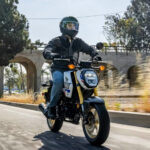

![Kawasaki Ninja 250 Top Speed [How Fast Can It Go?] kawasaki ninja 250 top speed](https://roadsumo.com/wp-content/uploads/2022/06/Kawasaki-Ninja-250-top-speed-150x150.jpg)
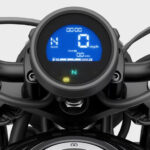
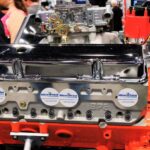
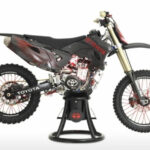

![Read more about the article Are Volkswagens Expensive to Maintain? [VW Maintenance Cost]](https://roadsumo.com/wp-content/uploads/2022/03/are-Volkswagens-expensive-to-maintain-300x200.jpg)
